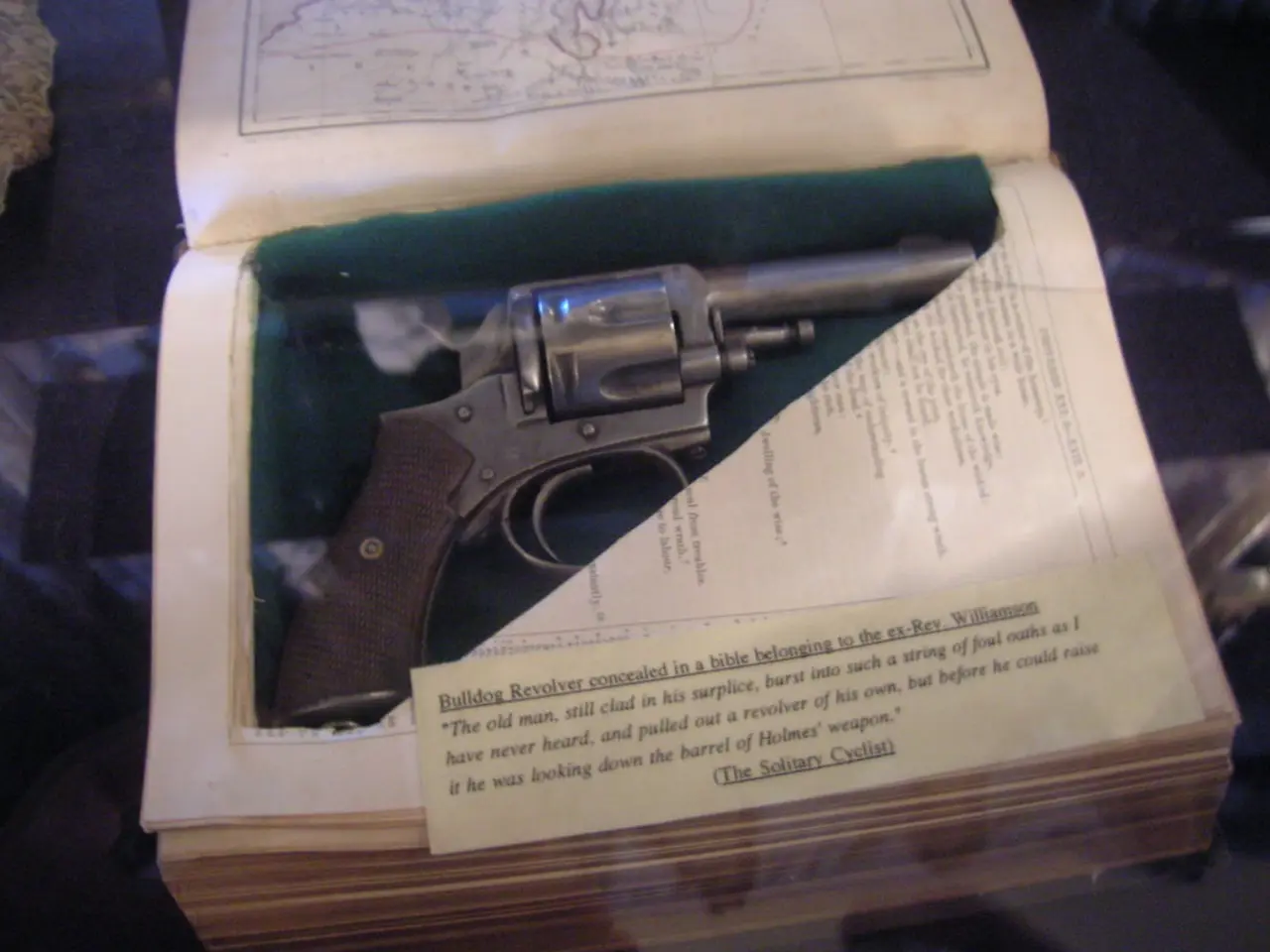Detailed Examinations on Bullet Trajectories and Gun Forensics
In the realm of criminal investigations, ballistics and firearms analysis play a crucial role in unraveling the mysteries surrounding firearm-related crimes. This science, which studies the behavior of projectiles, particularly bullets, in motion, is a vital component of forensic law.
Ballistics can be divided into three main categories: internal, external, and terminal. Internal ballistics examines the processes that occur within a firearm from the moment of ignition to the projectile's exit from the barrel. External ballistics deals with the projectile's flight path after it leaves the firearm, while terminal ballistics focuses on the effects of a projectile upon striking a target.
A key method in ballistics testing is test firing, which involves shooting a projectile to gather data about its behavior. Chronograph measurements and ballistic gelatin are also commonly used to analyze the velocity and impact of bullets, respectively. Microstria analysis, which focuses on the unique microscopic scratches and impressions left on the surface of bullet casings and projectiles, is another essential technique.
In addition, toolmark comparison complements microstria analysis by examining marks left on surfaces due to contact with tools, including gun barrels and firing pins. This comparison aids in identifying the specific weapon used in a crime.
Firearms experts serve as instrumental figures in legal proceedings where ballistics and firearms analysis are concerned. Their testimony and expert reports provide crucial insights, influencing trial outcomes. Collaboration between firearms experts and law enforcement is essential for effective integration of ballistics and firearms analysis into criminal investigations, enhancing the understanding and handling of firearm-related evidence.
However, the field is not without its challenges. The variability of firearms, degradation of evidence, inconsistent legal standards for admissibility of ballistics evidence, and the need for ongoing training and education within the forensic firearms community are just a few of the obstacles that experts must navigate.
Innovations in materials used in the manufacture of firearms and ammunition impact the characteristics of ballistic evidence, necessitating ongoing research and adaptation in analytical techniques. Advances in technology, such as the use of 3D imaging and modeling, software for trajectory analysis, and digital imaging techniques, have significantly enhanced the efficiency and accuracy of firearms analysis.
Firearms analysis is not only crucial during trials but also in establishing guilt or innocence by producing evidence that links a suspect to a crime scene. The meticulous examination of bullet casings and ballistic trajectories allows forensic experts to reconstruct events, thus offering valuable insights to law enforcement and the legal system.
In conclusion, ballistics and firearms analysis are essential components of forensic law, providing critical evidence in criminal investigations involving firearms. These analyses are integrated within forensic law to ensure justice, aiding in solving crimes and upholding the integrity of legal proceedings.
Read also:
- Peptide YY (PYY): Exploring its Role in Appetite Suppression, Intestinal Health, and Cognitive Links
- Toddler Health: Rotavirus Signs, Origins, and Potential Complications
- Digestive issues and heart discomfort: Root causes and associated health conditions
- House Infernos: Deadly Hazards Surpassing the Flames








